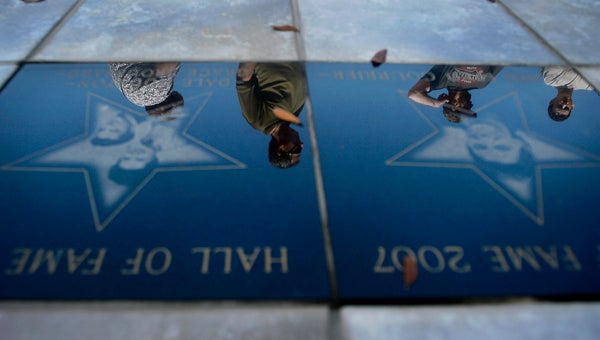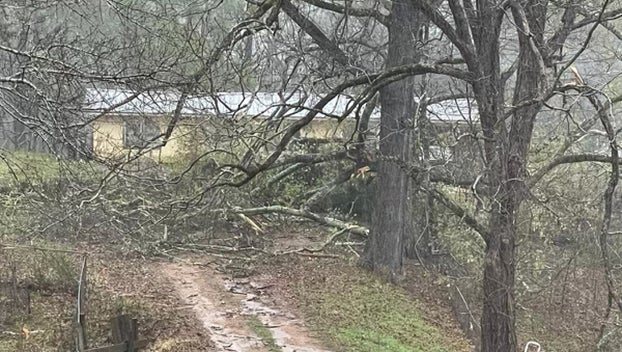Giver and taker, ‘Mighty Mississippi’ never tamed
Published 4:37 pm Thursday, May 19, 2011
Abraham Lincoln called it “the Father of Waters”; 18th-century English novelist Frederick Marryat deemed it a “vile sewer” — long before our industrial revolution turned it into one. The American Indians, says author Lee Sandlin, imagined it as “a giant sleeping snake that would wake up every seven years and attack whoever was alongside it.”
Flowing naturally or overflowing menacingly, it is impossible to overestimate the Mississippi River’s importance to the American economy and psyche. And right now, engorged beyond the limits of our control, the river is awake and on the attack.
Says Clyde Dufour, a fish wholesaler in Simmesport, La., northwest of Baton Rouge: “The river been making our lives.” But, he adds, “It ain’t our friend right now.”
If the Appalachian Mountains are the nation’s spine, then the Mississippi is its aorta. Winding through 10 states on its 2,350-mile course, it carries nearly half of all U.S. inland waterborne commerce, generates megawatts of power, and produces a bounty of protein from catfish to bowfin caviar.
No one has put a dollar figure on all of the jobs directly dependent on the Mississippi. But when a barge collision and fuel spill closed a 100-mile stretch of the river in 2008, the Port of New Orleans estimated the cost to the U.S. economy at $275 million a day.
On an average day, the river carries about 20 “tows” with 30 barges each, with each of those barges representing about 60 tractor-trailers, says Bob Anderson, a spokesman for the U.S. Army Corps of Engineers in Vicksburg, Miss. About 500 million tons of cargo is barged through the river’s mouth each year, he says.
“We call it ‘America’s Superhighway,'” he says.
According to the Corps, 250 tributaries drain into the Mississippi from a 1.25 million-square-mile basin that gathers water from 41 percent of the continental United States. The name comes from a Chippewa Indian word that translates roughly as “very big river.”
Spanish conquistador Hernando De Soto, believed to be the first European to explore the river, dubbed it “Rio Grande” after entering its stream in 1541. When he died a year later, legend has it, he was wrapped in blankets, weighted down with sand and buried beneath its muddy waters.
Unfettered access to the Mississippi has been crucial since the nation’s infancy. When the Spanish revoked Americans’ access to the port of New Orleans in 1802, Thomas Jefferson dispatched special envoy James Monroe to Napoleon’s France for negotiations that would eventually result in the Louisiana Purchase.
“All eyes, all hopes, are now fixed on you,” the president wrote to Monroe in January 1803, “for on the event of this mission depends the future destinies of this republic.”
It was during two flatboat trips down the Mississippi that a young Abraham Lincoln got his first full understanding of the evils of slavery. Years later, on July 4, 1863, it was Ulysses S. Grant’s capture of Vicksburg and reopening of the river that restored President Lincoln’s flagging hopes of saving the union.
“The Father of Waters,” he wrote to a confidant, “again goes unvexed to the sea.”
The great river’s headwaters are a glacial lake northwest of St. Paul, Minn. Where it empties from Lake Itasca, the “Mighty Mississippi” is only about 20 feet wide and 3 feet deep — “just a small crick,” says Dave Evenwoll.
But that’s enough to draw up to 6,000 visitors a year to Bert’s Cabins, the resort he and wife Pat run at Lake Itasca State Park.
“We’ve had people from every continent practically, other than maybe Antarctica,” says Pat Evenwoll, whose father opened the resort in 1939.
Adds Dave: “If it wasn’t for the river, we wouldn’t be here.”
The Evenwolls say many of their visitors come with plans of canoeing the Mississippi from its source to the Gulf of Mexico. But it is traffic of a much larger variety that dominates the waterway — and makes it so vital to the nation’s economy.
Sandlin says that role is a relatively new one.
“Mississippi shipping had almost entirely died out by the end of the 19th century,” says Sandlin, author of last year’s “Wicked River: The Mississippi When It Last Ran Wild.” ”And then the Army Corps of Engineers’ work on it over the course of the 20th century began bringing the shipping back up again.”
Rivers are living things. And the thing about a stream is that it always seeks the path of least resistance to its destination.
By the late 1800s, the Mississippi was wanting to jog to the left, bypassing the Louisiana capital of Baton Rouge and the busy port of New Orleans. That’s when the Corps stepped in.
In his book, “Life on the Mississippi,” Mark Twain observed: “The Military Engineers have taken upon their shoulders the job of making the Mississippi over again — a job transcended in size by only the original job of creating it.”
After 130 years of building locks and dams, levees and floodwalls, canals and spillways, we have corralled the Mississippi to the point, says Sandlin, where “it’s almost entirely an artificial creation.”
We have felt relatively safe building along its banks. And that is what raises the stakes so high when the river doesn’t do what we want it to.
Barclays Capital estimates that nearly 20 percent — 3.5 million barrels a day — of the country’s total oil refining capacity is located “within a floodable distance” of the river, with more than 14 percent located adjacent to the Mississippi.
Gambling along its shores is worth up to $13 million a month in tax revenues, says Allen Godfrey, deputy director of the Mississippi Gaming Commission. And that doesn’t take into account local sales taxes on the 6,700-plus casino hotel rooms on the river, or the income of about 13,000 employees who work the riverfront casinos, he says.
The recent historic floods have proven another of Twain’s observations: “The Mississippi River will always have its own way; no engineering skill can persuade it to do otherwise …”
Anderson, the Corps spokesman, says the flooded river is carrying almost 2.4 million cubic feet of water per second.
“That’s 25 Niagara Falls per second,” he says. “Enough water to fill up the (New Orleans) Super Dome in less than a minute.”
And it is not just water.
The Mississippi drains some of the nation’s most productive farmlands. Its banks have become “one of the most densely populated industrial sectors in the entire world,” says Sandlin.
All of that agricultural and industrial runoff finds its way into the river. And much of it will settle in the rice paddies, pastures and seafood-breeding bayous of the Lower Mississippi.
At the same time, the Mississippi has been harnessed to produce power. Hydroelectric accounts for about 7 percent of Xcel Energy’s capacity in Minnesota, says company spokeswoman Patti Nystuen. It buys 4.4 megawatts of that capacity from the City of Hastings.
With the Mississippi running so high, you might think those plants would be going like gangbusters. You’d be wrong.
“It’s just the opposite,” says Tom Montgomery, director of public works for the city of 22,000.
The high waters are too much of a good thing, he says. Normally, the city has about a 12-foot drop across its hydroelectric dam, and requires at least a 4½-foot drop to generate power. But with the water so high, that drop is only around 4 feet
Clyde Dufour’s problem is much the same. Dufour, owner of Highway 1 Fish Market in Simmesport, normally takes in between 14,000 and 15,000 pounds of river fish a day, mostly catfish and the various species of carp — Asian, buffalo, grass and German. But the waters are too high and fast to set the hook nets.
“Now I’m not picking 1,000 pounds a day,” he says. He’s not catching any crawfish at all.
Like many in the area, the 53-year-old Cajun blames some of his woe on the Corps’ decision to open portions of the Morganza Spillway — relieving pressure on the structures protecting the population centers of Baton Rouge and New Orleans, while flooding the rich fishing grounds of the Atchafalaya Basin.
“They hold the water, then they let it all come on us,” he says. “If they would let it go gradually through all the time, it would never have went against the levees even.”
Tom Hymel, a fisheries specialist with Louisiana State University Agricultural Center, says today’s pain will be tomorrow’s gain.
“When you get this big rise like this, it flushes those areas out,” says Hymel, who works closely with the region’s shrimpers. “Later on it’s going to be highly productive in crawfishing. … It’s going to be a bonanza for sport fishing.”
But Dufour is worried about the here and now.
“Next month, I don’t know how I’m going to pay my bills, I’ll be honest with you,” he says. “I’ve got 10 employees. I’m going to have to let go some of this. … and I’ve got about 20, about 30 fishermen fishes for me, and each one of them got one or two deckhands with them. It hurts a lot.”
As sad as it is for some, Sandlin says, the nation has chosen its course — and the Mississippi’s.
“If we took out all of the controls … I think the river, we’d find it almost impossible to live with,” he says.
“So we have this sort of enormous artificial construction now that we’re kind of stuck with.”






